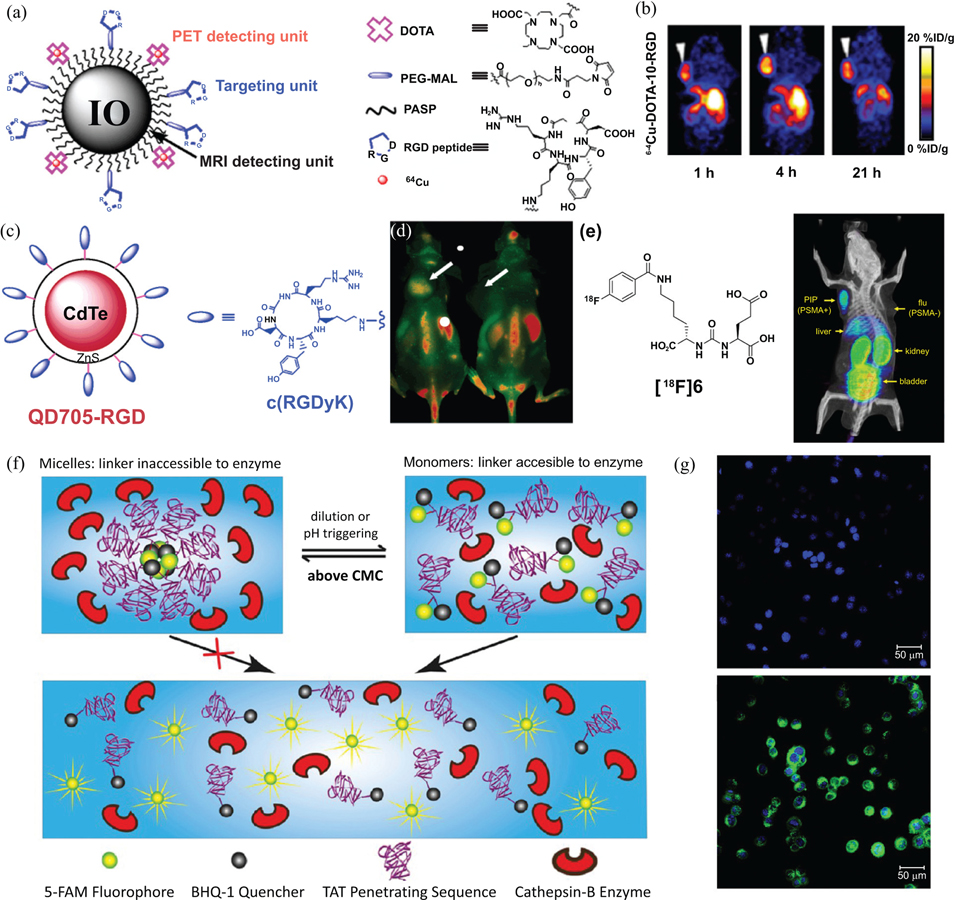Fig. (5).
Examples of nanoimaging agents that utilize peptides in their design. (a) A dual-modality imaging agent developed by Chen et al., possessing an iron oxide nanoparticle core for MRI imaging and conjugated 64Cu chelating DOTA groups for PET imaging. RGD peptide ligands target tumors displaying αvβ3 integrins. (b) Decay-corrected whole body coronal PET images of nude mouse bearing human U87MG tumor at 1, 4, and 21 h after injection of 3.7 MBq of the 64Cu-containing imaging agent. These images show that it can accumulate in the tumor xenograft (white arrows), with uptake by the liver also indicated. (c) A quantum dot (QD) based fluorescence imaging agent, QD705-RGD, developed by Chen et al. This agent consists of a CdTe/ZnS with a PEG-polymer coating. The surface was decorated with cyclic-RGD ligands to enable targeting of αvβ3 integrins. (d) In vivo NIR fluorescence image of U87MG tumor-bearing mice 6 h after treatment with 200 pmol of QD705-RGD (left) and QD705 (right), showing how the RGD ligand allows accumulation in the tumor relative to a control QD imaging agent. Prominent uptake was also seen in the liver, bone marrow and lymph nodes. (e) An example of Pomper’s urea-based PSMA-targeting ligand with an 18F radiolabel. Preferential uptake is seen in a PSMA+ (PIP) tumor, but not a PSMA− (flu) tumor via PET imaging. (f) Schematic illustration of Cui’s nanobeacon (NB) concept. In the assembled state, the cleavable linker (GFLG) is inaccessible to the Cathepsin B protease and remains intact. Upon breakdown of the nanostructure, triggered by either dilution or a change in pH, the linker becomes accessible and cleavage occurs. The separation of the 5-FAM fluorophore from the BHQ-1 quencher results in a measurable signal that can be used to probe the activity of the protease. (g) Fluorescence images of MCF-7 human breast cancer cells incubated with NBs after 0 h (top) and 1.5 h (bottom). The cell nuclei were stained with the blue dye Hoechst 33342. (Images in (a) and (b) were adapted from ref. [220], (c)-(d) were adapted from ref. [225], (e) from ref. [226], and (f)-(g) were adapted from ref. [242]).

